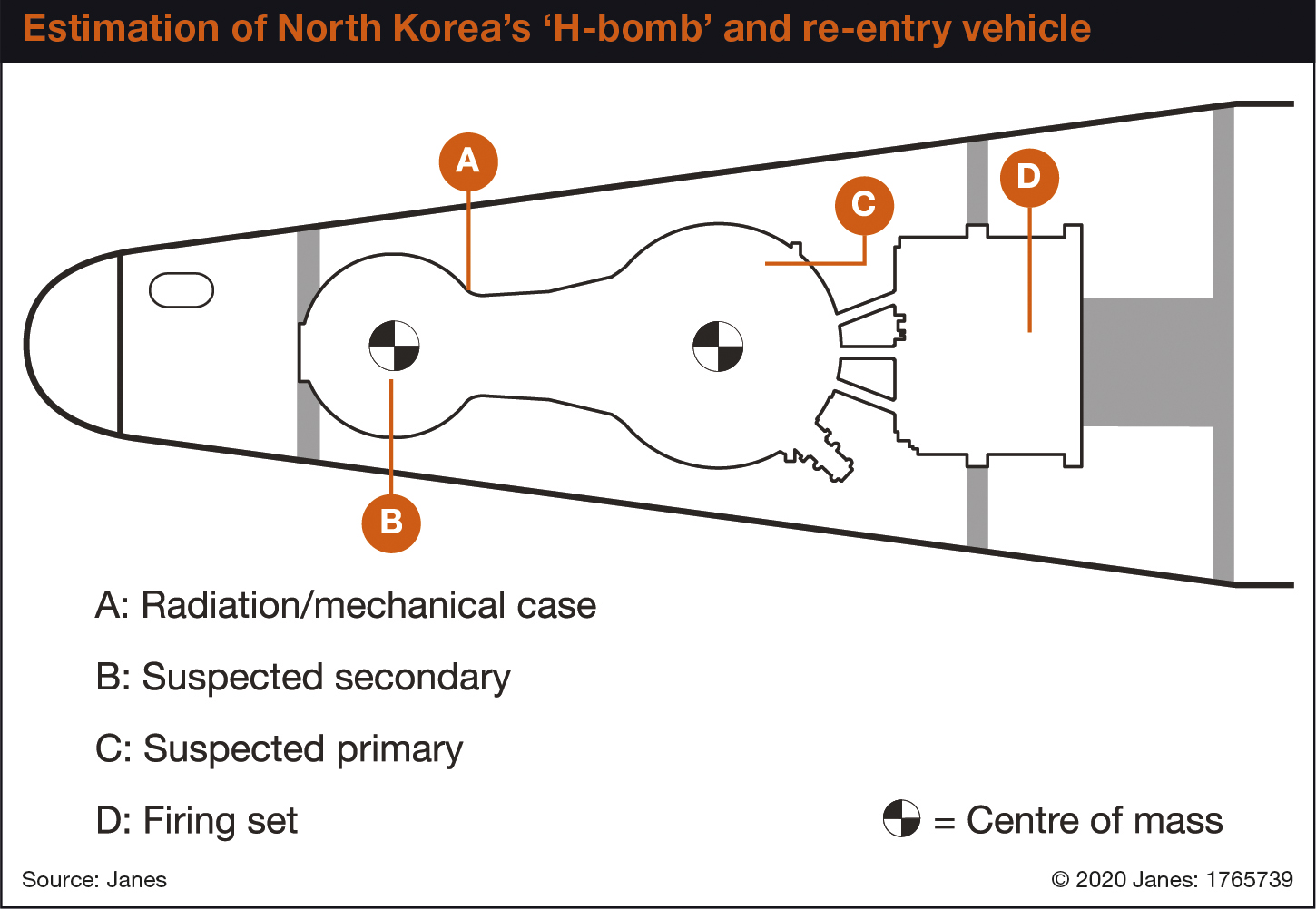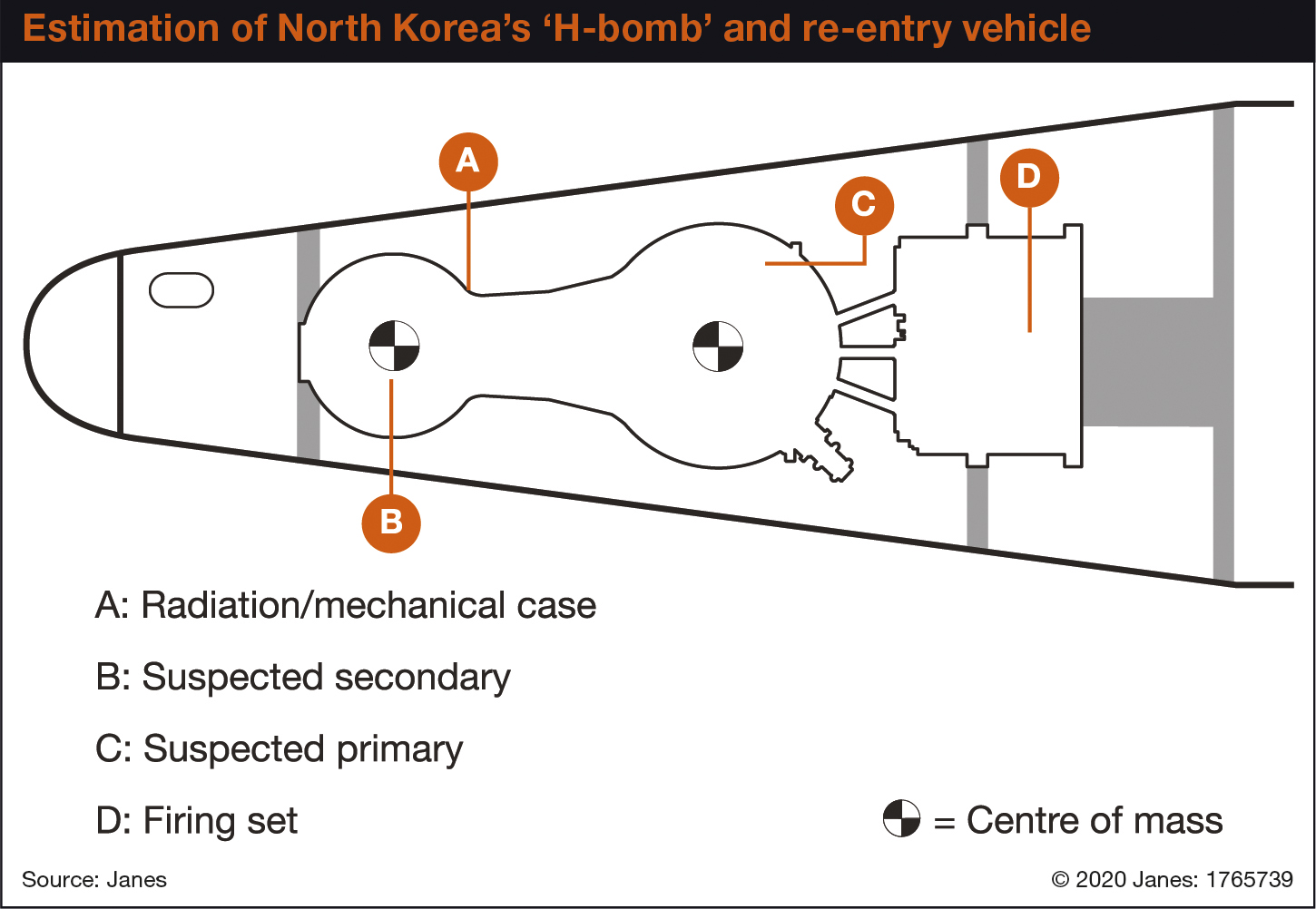- About
- Intara
- Capabilities
- Advisory
- Resources
- News
- Store
Featured: New methodology offers estimates for North Korean thermonuclear stockpile
Estimating the potential size of a country’s nuclear arsenal is a notoriously difficult enterprise. In a groundbreaking analysis for Janes Intelligence Review, Vitaly Fedchenko and Robert Kelley assess the fissile material requirements of thermonuclear weapons in North Korea’s nuclear arsenal, providing a new way to assess the overall inventory.
- Open-source assessments of nuclear arsenals are often based on estimates of fissile material mass required for fission weapons, but such assessments do not account for the material requirements of thermonuclear weapons.
- Janes has used the publicly known characteristics of US weapons to develop a methodology for such estimates and has applied this approach to North Korea’s arsenal.
- North Korean thermonuclear secondaries are likely to require about three times more highly enriched uranium than a simple fission weapon, and this finding clarifies the possible size and composition of the country’s arsenal.
There is extensive open-source literature that estimates the sizes of nuclear weapon arsenals maintained by the nine states known to have nuclear weapons: China, France, India, Israel, North Korea, Pakistan, Russia, the United Kingdom, and the United States. For example, the Stockholm International Peace Research Institute (SIPRI) produced such analysis in its Yearbook 2020: Armaments, Disarmament and International Security. For states whose nuclear arsenals are constrained by the availability of fissile material, such estimates are generally conducted in two steps.
The first step is the most difficult: to quantify stocks of fissile material – in this case, plutonium and highly enriched uranium (HEU) – in a country’s military stockpile. The second step is to estimate how much plutonium or HEU the state would use in each weapon. A typical open-source process generally relies on an assumption that all available HEU and plutonium stocks are allocated to fission-only or boosted single-stage weapons. This is an easy but adequate approximation: a quantity of HEU or plutonium assumed to be available in a country is divided by a quantity of the same material assumed to be needed to produce a fission weapon.
Already a Janes subscriber? Read the full article.
Interested in subscribing? See what we do
Article published online 30 July 2020.

Like to know more?
 Featured report: New methodology offers estimates for North Korean thermonuclear stockpile Groundbreaking analysis from Janes assesses the fissile material requirements of thermonuclear weapons likely to be in North Korea’s nuclear arsenal, providing a new way to assess the overall inventory.
Featured report: New methodology offers estimates for North Korean thermonuclear stockpile Groundbreaking analysis from Janes assesses the fissile material requirements of thermonuclear weapons likely to be in North Korea’s nuclear arsenal, providing a new way to assess the overall inventory.